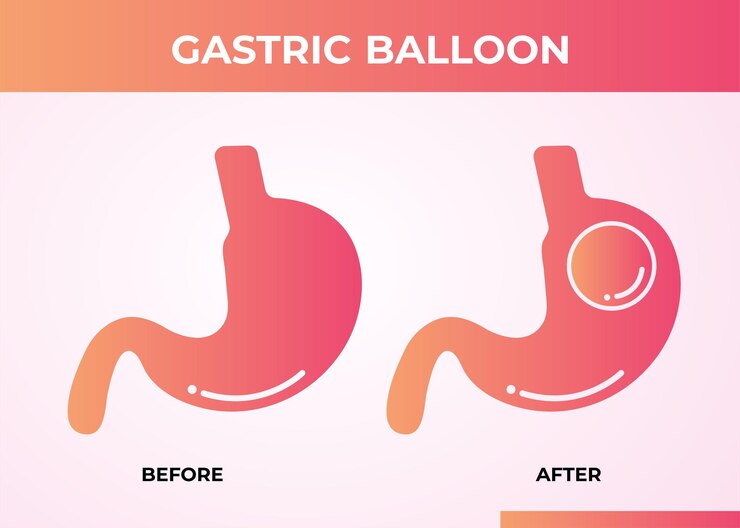
While traditional weight loss methods such as diet and exercise can be effective for some, others may require more intensive interventions. One such intervention is the gastric balloon, which is a non-surgical weight loss option that involves inserting a balloon into the stomach to reduce its capacity and limit food intake. However, as with any medical procedure, knowing about gastric balloon pros and cons before deciding if gastric balloon is the right option for an individual’s weight loss goals and overall health. In this article, we will explore the benefits and risks of gastric balloon to help individuals make an informed decision.
Pros
One of the main advantages of gastric balloon is that it is a non-surgical approach[1] to weight loss. Unlike other weight loss surgeries such as gastric bypass or sleeve gastrectomy, gastric balloon does not require any incisions or alterations to the digestive system. This means that there is minimal downtime and quick recovery time.
Another benefit of gastric balloon is the significant weight loss results that can be achieved in a relatively short period of time. Clinical studies have shown that patients who undergo gastric balloon typically lose 20-30% of their excess body weight within six months of the procedure.
In addition to weight loss, gastric balloon has been shown to reduce the risk of obesity-related diseases such as diabetes, high blood pressure, and heart disease. By decreasing food intake and promoting healthy eating habits, gastric balloon can help individuals manage these conditions and improve their overall health.
Lastly, gastric balloon can also have a positive impact on mental health and self-esteem. Losing weight can boost confidence and improve quality of life, which can lead to better relationships, career success, and overall well-being.
Cons
While gastric balloon can be an effective weight loss option, there are also some potential risks and drawbacks to consider. One of the most common side effects of gastric balloon is nausea, vomiting, and discomfort. This is typically temporary and can be managed with medication, but it can be a significant inconvenience for some patients.
Another potential risk of gastric balloon is the possibility of balloon deflation or migration, which can require surgical intervention to correct. While these complications are relatively rare, they can be serious and may result in the removal of the balloon or other surgical procedures.
Long-term success in maintaining weight loss with gastric balloon has also been a concern. Some studies have shown that weight loss may plateau after a year or two, and individuals may regain weight once the balloon is removed. This underscores the importance of adopting healthy eating and exercise habits to maintain weight loss even after the balloon is removed.
Cost can also be a barrier for some individuals considering gastric balloon, as it may not be covered by insurance and can be expensive out-of-pocket.
Lastly, gastric balloon is not suitable for everyone. Individuals with certain medical conditions such as gastrointestinal disorders or previous stomach surgery may not be candidates for the procedure. It is important to discuss any medical history or concerns with a healthcare provider before considering gastric balloon as a weight loss option.
Conclusion
In conclusion, gastric balloon, being one of the effective alternatives to Bariatric surgery, offers several benefits for weight loss, including a non-surgical approach, significant weight loss results, and reduced risk of obesity-related diseases. However, it also has potential drawbacks such as side effects, risk of complications, and limited long-term success. It is important to weigh the gastric balloon pros and cons and discuss any concerns with a healthcare provider to make an informed decision about whether this weight loss option is right for you.

Lifebing is driven by an unrelenting passion for promoting health and well-being, our team is wholly committed to curating exceptional content and immersive experiences.
